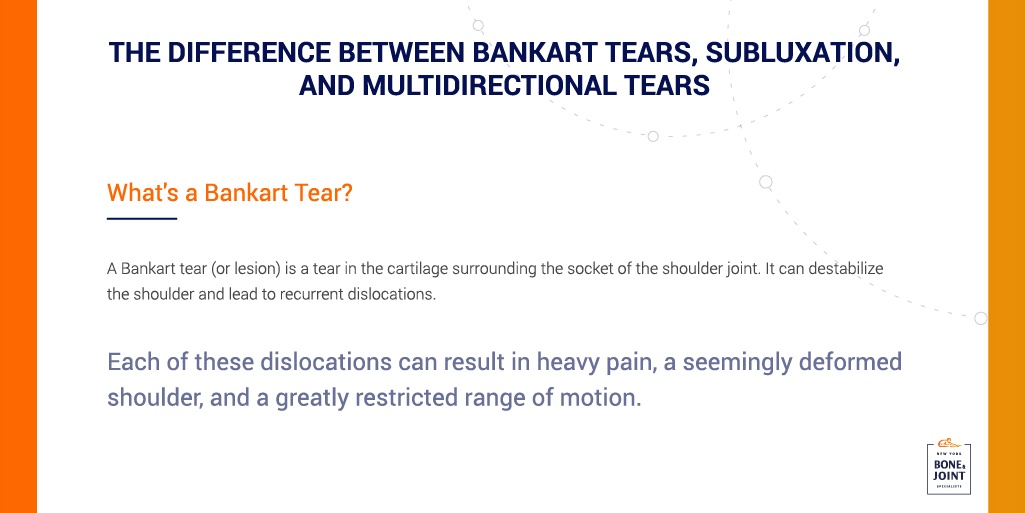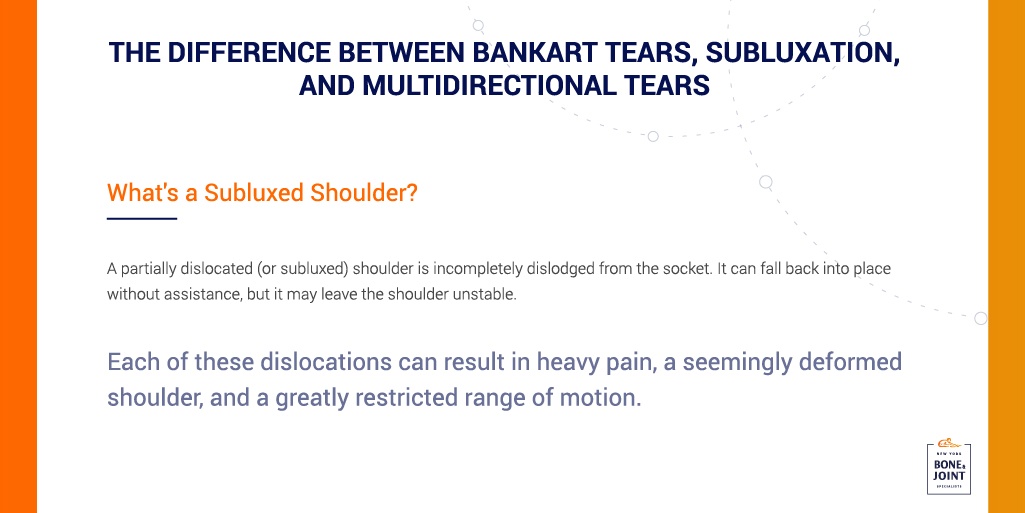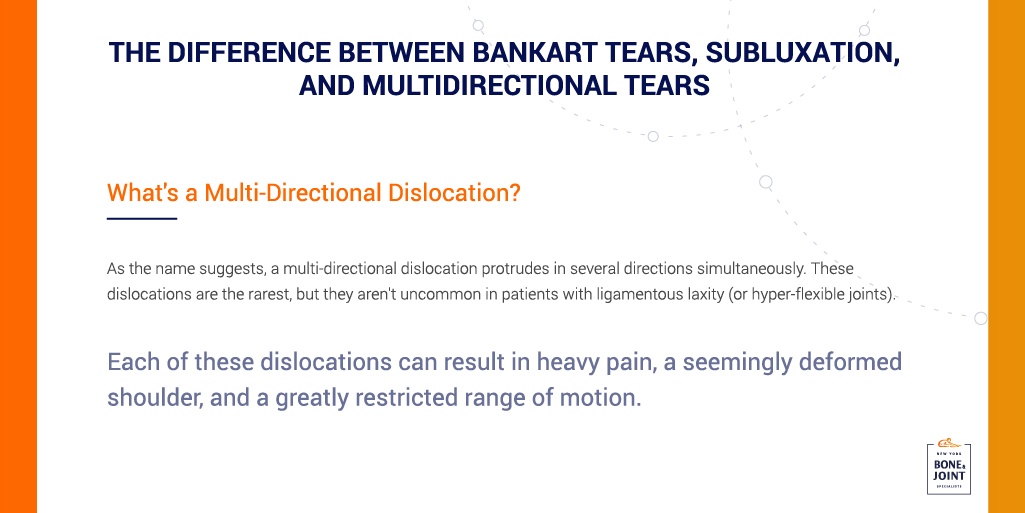When you’ve dislocated your shoulder, your first priority will likely be to seek relief from the pain. To do so, however, it’s important to understand the different types of shoulder dislocations — each of which comes with a slightly different set of complications — and identify which injury you’ve sustained.
To help you on your road to recovery, we’ve detailed the differences between the most common types of shoulder dislocations — bankart tears, subluxation, and multi-directional tears — and how to seek relief from each.
BANKART TEARS

Bankart tears are most frequently treated with a specialized arthroscopic surgery during which the surgeon repairs the torn labrum. You’ll need to keep your arm in a sling for about a month after surgery, but you should be able to resume most daily activities and begin physical therapy within a few weeks. Complete recovery should follow after five months.
SHOULDER SUBLUXATION

Like complete dislocations, subluxing shoulders may need to be treated surgically to ensure that the joint is set in place and that all surrounding tissues heal properly. Most patients can expect to resume their usual activities within a few weeks and recover completely in about five months.
MULTI-DIRECTIONAL DISLOCATIONS
The rarest type of shoulder dislocation, multi-directional dislocations occur when the shoulder simultaneously dislocates in several different directions. Usually caused by overuse or sudden trauma, these dislocations are most common in patients with loose ligaments (ligamentous laxity) or hyper-flexible joints.
If you’re looking to treat a dislocated shoulder, our team of specialists at New York Bone & Joint has decades of combined experience in diagnosing and treating dislocations of all types. Your doctor will walk you through every stage of the process with care and compassion, diagnosing your injury, guiding you through every step of rehabilitation, and promoting the long-term health of your shoulder joint.
You can find more in-depth information about symptoms and treatment options for shoulder dislocations here. If you’ve suffered a dislocation or worry that you might be prone to one, call us today to schedule a consultation!





